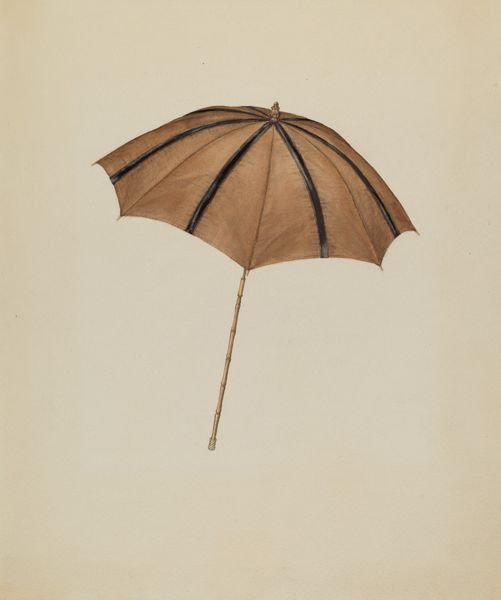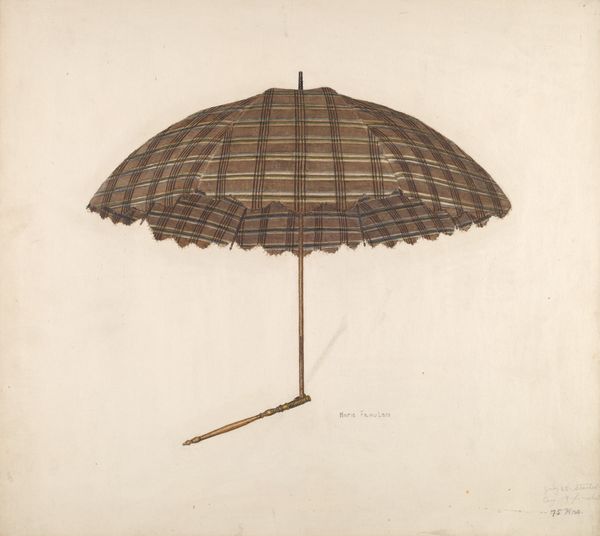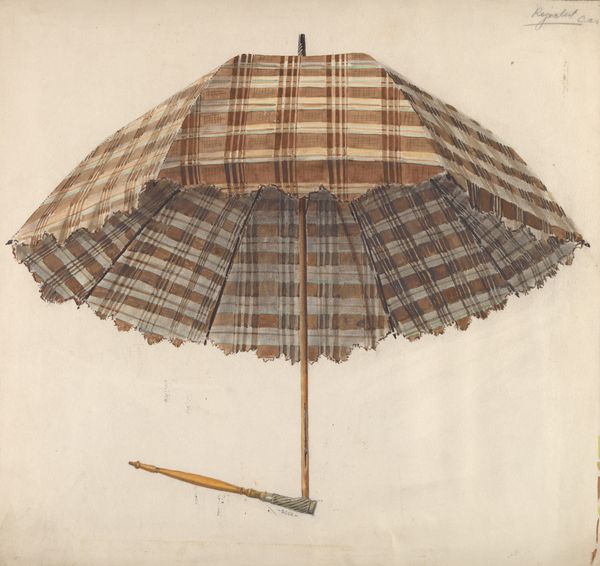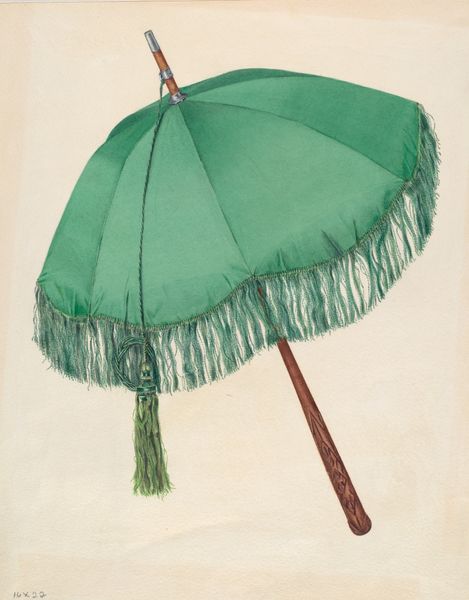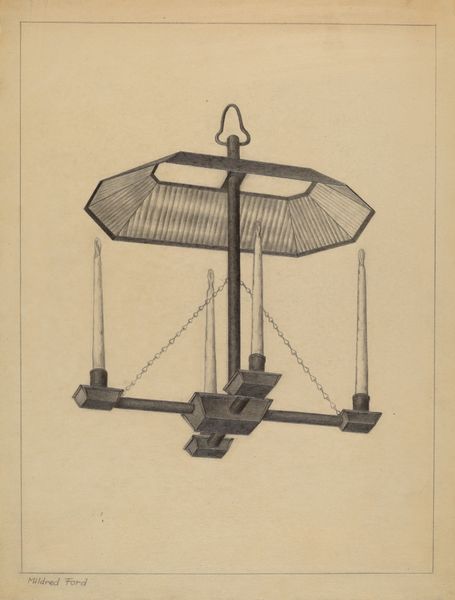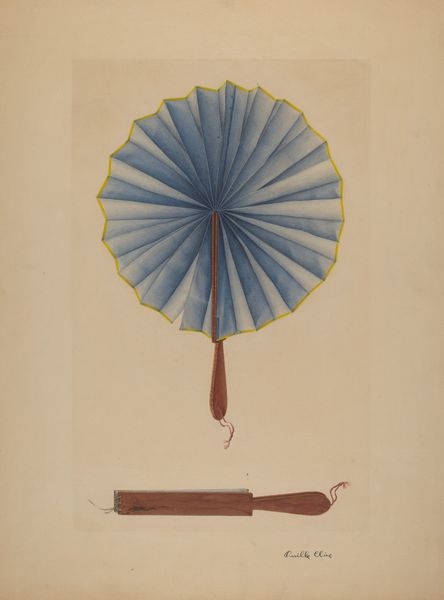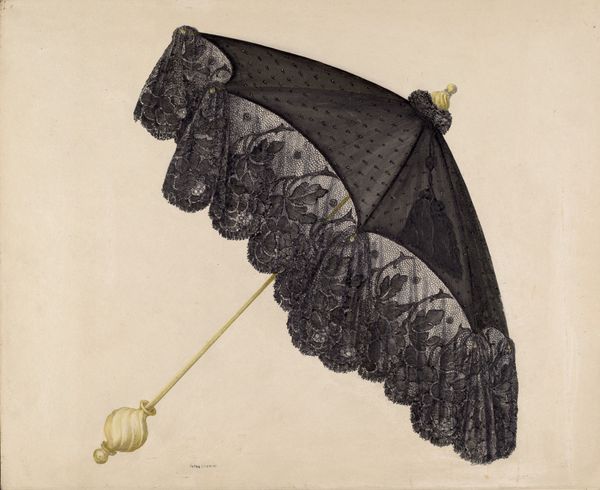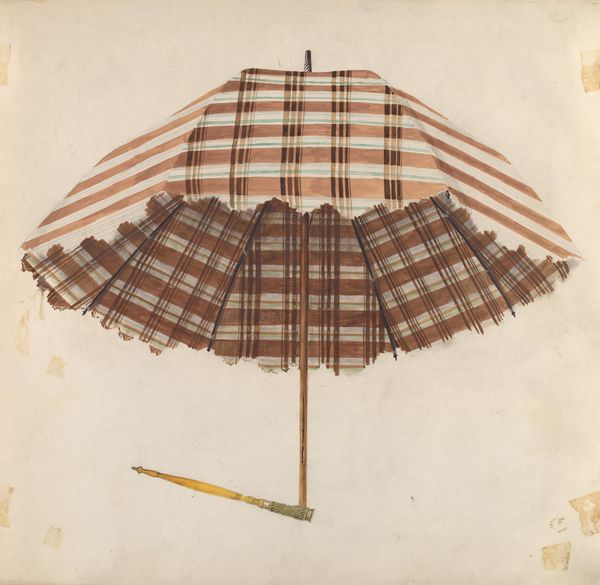
drawing, pencil, charcoal
#
shading
#
drawing
#
charcoal drawing
#
pencil
#
charcoal
#
academic-art
Dimensions: overall: 50 x 39.4 cm (19 11/16 x 15 1/2 in.)
Copyright: National Gallery of Art: CC0 1.0
Editor: This is Lee Hager’s drawing, "Sunshade," made with pencil and charcoal sometime between 1935 and 1942. It feels very formal, even severe. What symbols do you recognize in this artwork? Curator: The sunshade itself is deeply symbolic. It represents not just protection from the sun, but also status and notions of feminine virtue. Think about who typically carried a sunshade during this period and what it conveyed about their position in society. Editor: So, it's less about the object itself and more about the person holding it? Curator: Precisely! The sunshade acted as a barrier, suggesting a delicate, protected existence, setting them apart from those who toiled outdoors. And Hager’s choice of stark charcoal enhances this sense of formality, almost like a memento mori. What feelings does that evoke for you? Editor: That's an interesting perspective; the darkness made me think of shadows, perhaps a hidden, less-pleasant side of that protected life. It feels… weighty. Curator: Yes! The shadow side, perhaps even a commentary on the constraints imposed by such a carefully constructed social role. Notice how the handle, almost like a walking stick, hints at a journey, but one carefully controlled and directed. Does that influence your impression at all? Editor: Definitely. It makes me consider how even seemingly simple objects can carry complex stories. It also makes me consider how interpretations might change, even for people viewing art from the same era as its creation. Curator: Exactly. Examining these visual artifacts offers us glimpses into past cultural values and unspoken societal rules that can endure in symbolic language.
Comments
No comments
Be the first to comment and join the conversation on the ultimate creative platform.
